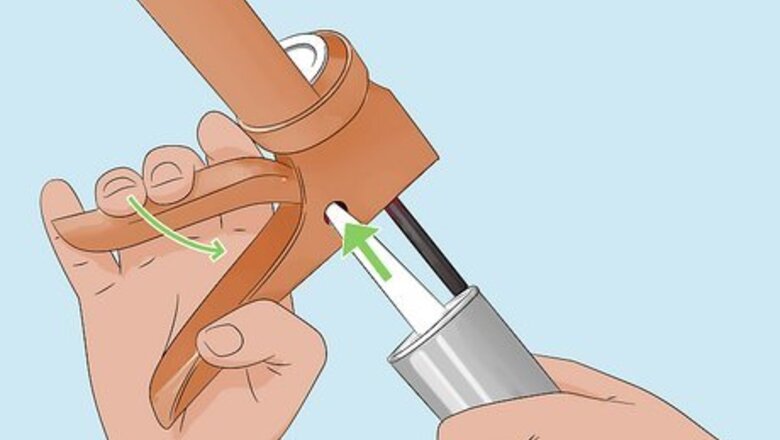
views
Puncturing the Seal with Caulk Gun Attachments
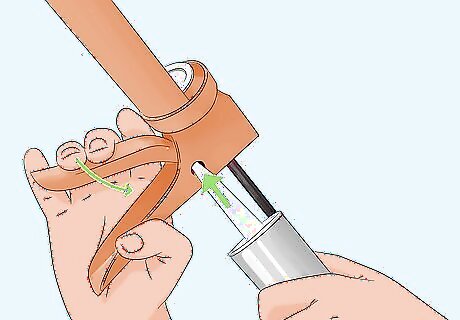
Place the tip of the nozzle in the hole on the gun's handle to cut it open. The hole is typically located on the left side of the caulk gun handle. Place the tip of the tube's nozzle in the hole at a 45-degree angle, then squeeze the gun's trigger quickly to slice open the tube. Note that the further down the tip that you cut it, the wider the hole will be. Thus, if you only want to apply thin layers of caulk, you should cut open the tube near the tip of the nozzle. Conversely, if you want to apply a lot of caulk at once, you should cut the nozzle near the bottom. Almost all caulk guns have this hole on the side of the handle. However, if yours doesn't, you can also use a sharp utility knife to cut open the tube.
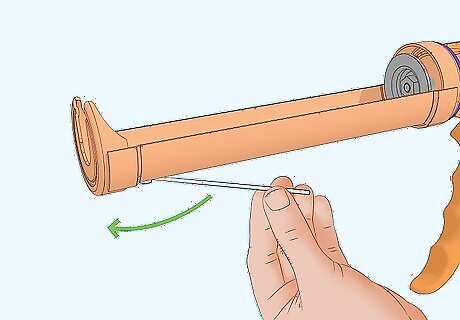
Locate and pull out the tiny seal punch on the underside of the gun. The seal punch is the thin metal rod on the tip of the gun's underside. The rod is on a swivel, so pull it out towards the side of the gun to deploy it. Most caulk guns come with this seal punch attached to them. However, if yours doesn't have a seal punch, you can also use a nail, screwdriver, or piece of wire to pierce the seal. If the seal punch isn't located on the underside of the gun, it may be on the inside of the handle.
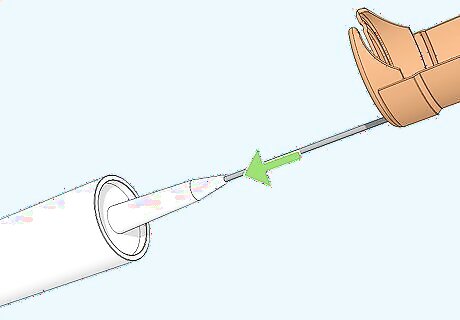
Push the seal punch repeatedly into the tube until the seal is broken. Hold the caulk gun with the punch pulled out in your dominant hand and position the seal punch inside the tube. Then, holding the tube in your other hand, poke the punch into the nozzle repeatedly to break the seal. Pull out the seal punch and check it for caulk to confirm that the seal has been broken. Use a towel or cloth to wipe the caulk off of the seal punch before you push it back under the caulk gun.
Using Household Items to Pierce the Seal
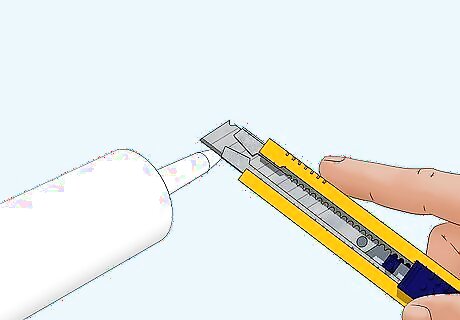
Cut the tip of the nozzle with a utility knife to open it. Hold the tube in your non-dominant hand while you cut it with your dominant hand at a 45-degree angle. Note that the further down the nozzle you cut, the wider the hole will be. The hole in the nozzle will determine the width of the caulk as it comes out of the tube, so cut the nozzle to the desired caulk width. You can also use scissors to cut open the nozzle if you don't have a utility knife. Most caulk gun nozzles have lines on the side that indicate the width the caulk will be if you cut the nozzle at that point. Refer to these lines when you're cutting to make sure you're opening the tube at the right spot.
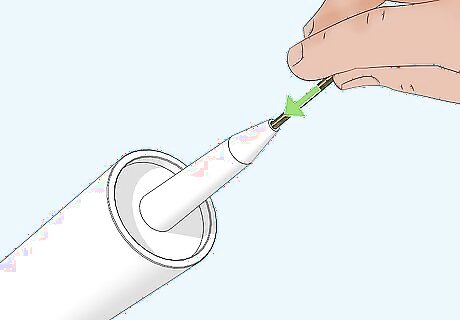
Push a nail into the tube to puncture the seal if you have a nail handy. For best results, use a 1-penny nail that is around 2 inches (5.1 cm) long. Push the nail into the nozzle until you feel it reach the seal. Then, continue applying force to the nail to puncture the seal. Wipe the nail off with a rag or towel after you pierce the seal to get the caulk off of it.
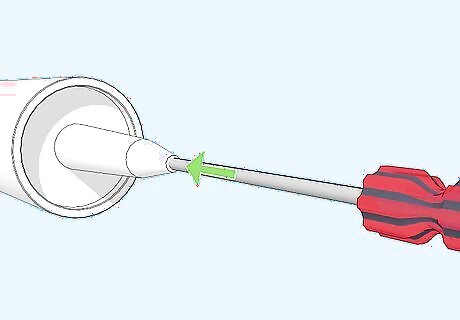
Insert a screwdriver into the tube to pierce the seal if it's long and thin. If you have a long, thin, Phillips-head screwdriver nearby, this is the next best option after a nail for puncturing the seal on a tube of caulk. Jam the screwdriver into the nozzle repeatedly to break the seal. Pull it out and check it for caulk to make sure you've completed pierced the seal. Your screwdriver should be at least 2 inches (5.1 cm) long to ensure it'll reach far enough to break the seal. Use a towel or rag to clean the caulk off of the screwdriver after you're done.
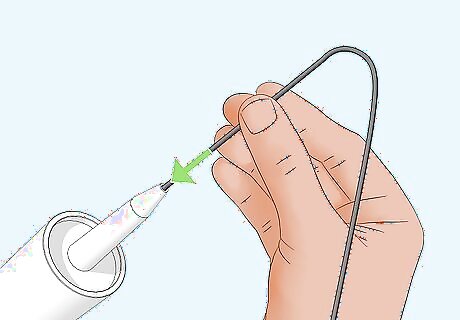
Puncture the seal with a wire coat hanger if that's all you have. Use wire cutters or side-cutting pliers to cut a 6 in (15 cm) piece of wire from a coat hanger. Bend the top two-thirds of the wire so that you'll be able to grip it, then push the remaining wire into the nozzle. Jam the wire back and forth in the nozzle repeatedly to pierce the seal. You can also use a roll of bare copper wire instead of a wire coat hanger, if you have it.




















Comments
0 comment